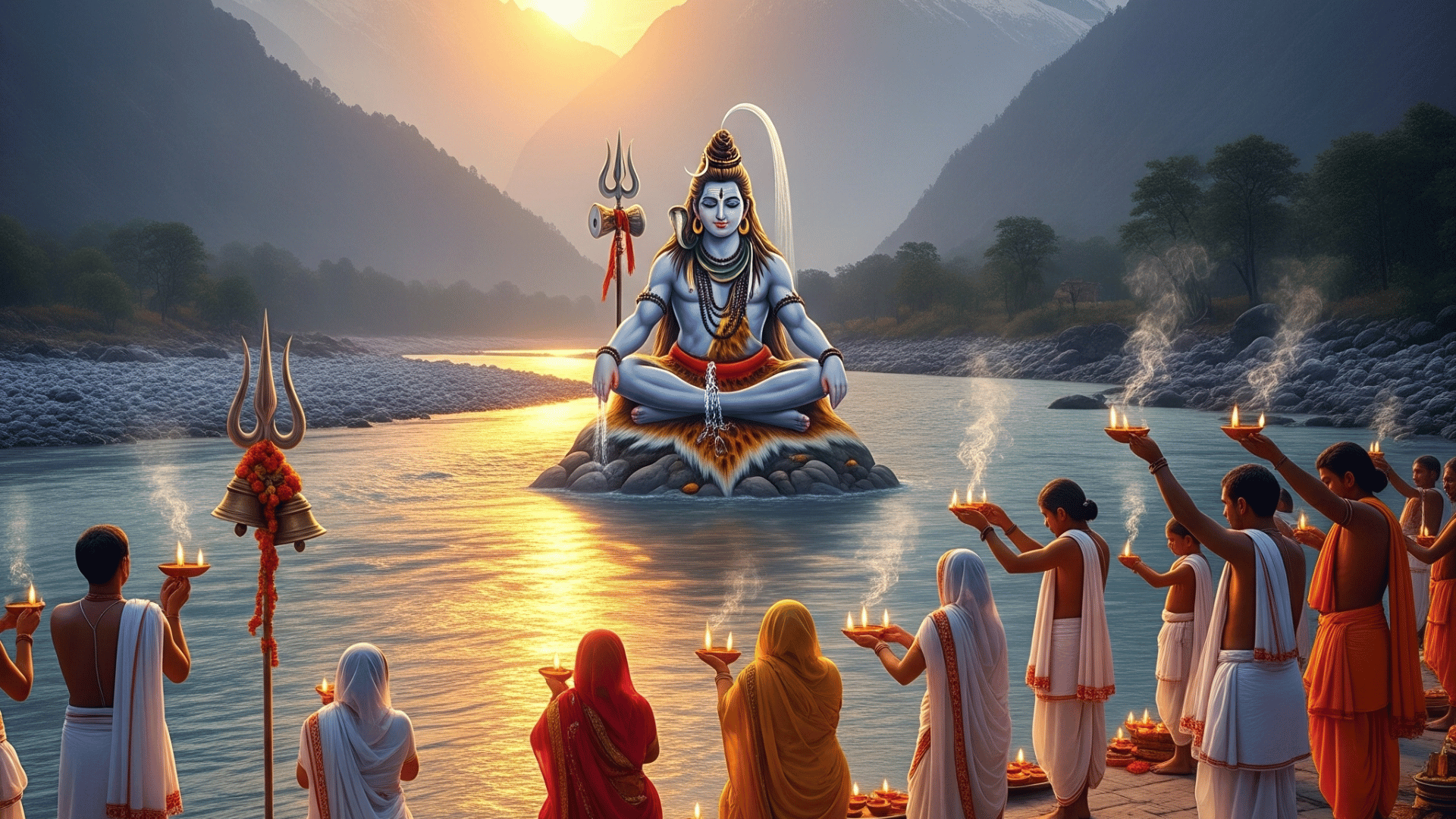
Ganga Dussehra holds immense significance in the religious, cultural, and spiritual traditions of India. This festival commemorates the descent of Mother Ganga onto Earth. According to religious belief, on this day, the holy River Ganga descended from heaven to Earth to cleanse the sins of humanity. Ganga Dussehra is observed annually on the tenth day (Dashami) of the waxing moon (Shukla Paksha) in the Hindu month of Jyeshtha. It is also known as Ganga Jayanti.
Significance of Ganga Dussehra
Ganga Dussehra is important not just from a religious perspective but also from spiritual and scientific viewpoints. Bathing in the Ganga, offering charity, and performing rituals on this day are believed to wash away ten kinds of sins — hence the name Dussehra (where ‘Dasha’ means ten and ‘Hara’ means destroyer). These ten sins are categorized as follows:
- Physical sins (committed through the body)
- Verbal sins (committed through speech)
- Mental sins (committed through thoughts)
It is believed that taking a dip in the Ganga on this day absolves one of these ten sins and paves the path to salvation (moksha).
Legend of Ganga’s Descent
According to the Puranas, King Sagar’s 60,000 sons were reduced to ashes due to a curse. To liberate their souls, his descendant, King Bhagirath, performed intense penance. Pleased with his devotion, Lord Shiva allowed Mother Ganga to descend from the heavens. However, her torrential flow was so powerful that it could have destroyed the Earth. So, Lord Shiva captured her in his matted hair and released her gently onto Earth.
Upon her descent, Ganga first touched the ashes of Bhagirath’s ancestors and liberated their souls. This is why she is also called Bhagirathi, in honor of King Bhagirath’s devotion and sacrifice.
Major Observances on Ganga Dussehra
1. Holy Bath in Ganga
A dip in the Ganga River on Ganga Dussehra is considered highly auspicious. It is believed that bathing in the Ganga on this day washes away sins and grants spiritual merit. Those who cannot go to the river can add a few drops of Ganga Jal (holy water) to their bathwater at home.
2. Ganga Worship (Puja)
Worshipping Mother Ganga is regarded as highly meritorious. After the bath, devotees offer Ganga water, flowers, rice, incense, diyas (lamps), coconut, betel leaves, and other items while performing her aarti.
3. Charity and Donation
Charity holds special significance on Ganga Dussehra. Donating items like hand fans, earthen pots, water, fruits, sharbat (syrup), clothes, umbrellas, footwear, and food grains is considered highly auspicious. It is said that one should try to donate at least ten different items on this day.
4. Bhagirath Worship and Story Listening
The story of Bhagirath’s penance and the descent of Ganga is remembered and shared. People listen to or read this legend, reflecting on King Bhagirath’s selflessness and devotion.
Ganga Dussehra Puja Vidhi (Ritual Procedure)
1. Morning Bath
- Wake up early during the Brahma Muhurat (pre-dawn hours) and take a bath.
- If possible, bathe in the Ganga. Otherwise, mix Ganga water in your bath at home.
- Wear clean and pure clothes.
2. Items Required for Puja
Ganga water, flowers, unbroken rice grains, vermilion (roli), sacred thread (mauli), oil/ghee lamp, incense, fruits, sweets, basil leaves, Panchamrit (five-element offering), coconut, betel nuts, and a water-filled pot (kalash).
3. Puja Procedure
- Place a clean white cloth on a raised platform and set an image or symbol of Mother Ganga.
- Light a lamp and offer arghya (water offering) with Ganga water.
- Invoke Mother Ganga by chanting:
“Om Namah Shivaya Aim Hreem Shreem Gangayai Namah”
(Chant this 108 times) - Offer flowers and perform the aarti.
- Listen to or read the story of Ganga’s descent.
- Offer sweets or fruits as bhog (offering).
4. Donation
- Conclude by donating to a Brahmin or needy person — clothes, earthen pots, fans, food grains, money, etc.
Special Remedies for Ganga Dussehra
- Sprinkle Ganga Water: Sprinkling Ganga Jal in your home removes negative energy and brings peace and prosperity.
- Light a Lamp near Tulsi Plant: In the evening, light a lamp near the basil plant and meditate upon Mother Ganga.
- Feed a Cow: Feeding green fodder to cows on this day is considered highly auspicious.
- Worship the Peepal Tree: Light a lamp under a Peepal tree and perform circumambulations.
- Offer Arghya to the Sun: Offer water to the Sun God while chanting “Om Suryaya Namah.”
Scientific Aspects of Ganga Dussehra
Ganga water is scientifically proven to have special antibacterial properties that prevent it from becoming stale. It also boosts immunity and is known to purify the body. The timing of Ganga Dussehra in summer aligns with the need for cooling the body — bathing in the holy river provides physical and mental relief during peak heat.
Things to Avoid on Ganga Dussehra
- Avoid meat, alcohol, and tamasic (impure) food.
- Refrain from anger, jealousy, harsh speech, and disrespect.
- Do not waste water.
- Do not insult anyone or donate with pride or ego.
Ten Sacred Names of Ganga Mata
On Ganga Dussehra, devotees remember and recite the following ten sacred names of Mother Ganga:
- Ganga
- Bhagirathi
- Jahnavi
- Vishnupadi
- Mandakini
- Alaknanda
- Sursari
- Tripathaga
- Patalganga
- Bhuvaneshwari
Chanting these names with devotion is believed to invoke the blessings of the goddess.
Ganga Dussehra is not only a festival of religious significance but also a reminder of nature’s purity, spiritual depth, and the importance of internal and external cleanliness. Just like the holy Ganga purifies everything in her path, we too must strive to cleanse our thoughts, actions, and speech.
Every meritorious act performed on this sacred day is believed to bring peace, prosperity, and spiritual growth. Through sincere devotion, worship, and charity, Ganga Dussehra helps us walk the path toward liberation (moksha).
















